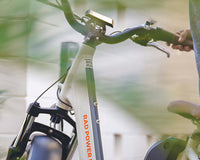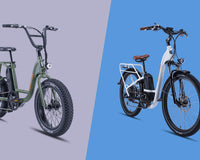As ebike enthusiasts and advocates of cycling at large, we aspire to mimic Europe's widespread support of biking as a method of transportation, fun, and exercise.
Did you know that ebikes are operated and regulated differently in Europe than they are in North America? Here are a few facts to help explain some of the differences:
- Much like traditional bicycles, ebikes are much more popular in Europe than they are in the United States. Electric bike sales are now surpassing traditional bike sales for the first time in history, and many cities are actively encouraging residents and tourists to ride them via bike-share programs or tax subsidies.
- Like in the U.S., there are several classifications of electric bikes in Europe. The traditional models are known as Pedelecs and are limited to 250W motors that can only be engaged through pedaling. Ebikes with a more powerful motor that can be operated through pedaling and an on-demand throttle, like those from Rad Power Bikes, fall under the L-category of "powered cycles." Many countries require ebikes in this category to be registered and insured, which helps keep track of your bike if it's lost or stolen.
- Some European countries don't require riders to wear a helmet. Traveling via bike is common across the EU, and many cities have vast networks of dedicated lanes, signals, and other bike-focused infrastructure to help keep cyclists safe. Despite these protections, we still encourage riders to always wear a helmet, no matter where they are.
We're big fans of Europe's bike-friendly culture, and we introduced our powerful and affordable ebikes to EU residents in 2017. We now offer two models -- the RadWagon electric cargo bike and the RadRhino electric fat bike -- online and at our retail showroom in Utrecht, Netherlands.
To see our EU models in action, watch the videos below!






